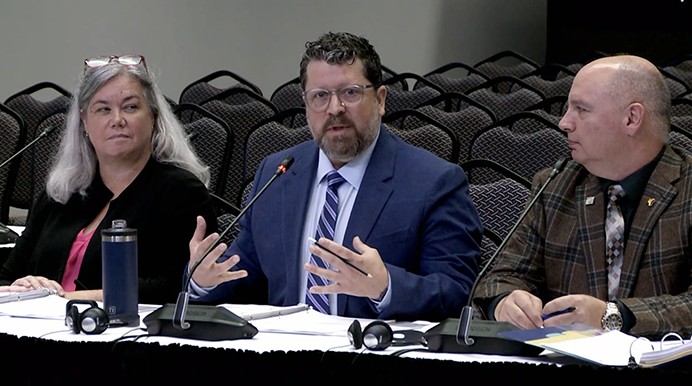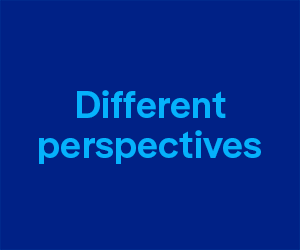
By Connie Thiessen
Canadian radio cannot continue to be used as a tool to prop up the music industry, Canadian Association of Broadcasters (CAB) President Kevin Desjardins told the CRTC’s hearing on Canadian content on audio services Thursday.
“There has never been a more urgent moment than now for the commission to revise and adjust the regulatory regime for commercial radio in Canada. Simply put, the status quo will not do,” Desjardins asserted.
The CAB, presenting its case on behalf of its 26 members representing over 550 commercial radio stations, argued that the current regulatory burden, particularly “artificially high exhibition requirements” for Canadian content, is crippling the industry. He highlighted that radio profitability has plummeted to an all-time low of three per cent, even after significant cost-cutting measures.
“What you cannot overlook at this critical juncture is that commercial radio stations can no longer support the weight of the regulatory burden,” Desjardins said, highlighting radio’s continued administrative obligations, while competing at a disadvantage against foreign, unregulated streaming services for the same audience and advertising revenue.
“If there was an economic argument for 35 per cent CanCon, then the streamers would be doing it already,” added Rod Schween, president of Pattison Media and chair of the CAB’s CEO Radio Council. “When that option is there for that audience to move to a global player rather than to another Canadian radio station…the CRTC’s own data shows the evidence of that and the impact that’s had on our industry as a whole.”
The CAB presented four key pillars for a sustainable future: sustainability, equitable rules, flexibility, and simplicity. One of the association’s central proposals is a reduction in Canadian content quotas from the current 35 per cent to historical levels of 25 per cent. Schween argued that this change would provide stations with the flexibility needed to attract and retain listeners who now have a “multitude of voices and choices.”
“Anything that detracts from listeners choosing our medium over another one, contributes to those decreases,” he maintained.
CAB is also calling for a new, simplified Canadian content definition, moving away from the complex “MAPL” system (Music, Artist, Performance, Lyrics) to a more straightforward “CA” model (Composer or Artist), crediting a song as Canadian if either the composer or artist is Canadian, regardless of where the song was written or recorded.
Debating the Role of Radio
CRTC Commissioner Bram Abramson challenged the CAB on the direct link between quotas and the industry’s economic struggles, asking how loosening CanCon requirements would “help save radio?”
Desjardins acknowledged that CanCon isn’t the sole issue, but a significant factor, stressing that radio’s unique value lies in its local connection and ability to provide essential information during emergencies, something streaming services don’t offer.
“The more the business model is challenged by arbitrary quotas, the less flexibility we have to compete,” he stated.
The CAB also addressed supporting Indigenous and emerging artists, suggesting that a quota-based approach is ineffective. Instead, they propose reallocating existing financial contributions to organizations like FACTOR and the Canadian Starmaker Fund, which provide mentorship and support.
“We think that the supports to be put in place…are the sorts of things that we think that will be truly meaningful, and will help to create a pool of Indigenous artists that…want to be ready for commercial radio,” Desjardins said.
IP ownership protections, strategic investment necessary: CIMA
Earlier in the day, Andrew Cash, president of the Canadian Independent Music Association (CIMA), argued that the future of Canada’s music industry hinges on two core principles: fostering Canadian-owned intellectual property (IP) and doubling down on strategic investments.
Cash stressed that IP ownership is a “vital question” for the music ecosystem.
“Our companies…are creating IP,” said Cash. “They are putting their money on the table to create Canadian-owned intellectual property that can be exported and and hopefully Canadians reap the economic and cultural rewards for that IP.”
“When you own that, you exploit it globally, that money comes back to Canada,” he added.
When asked about what success looks like for the Canadian music industry, Cash defined it as a dynamic sector that creates “middle class careers” for artists and helps them find global audiences. He was critical of relying solely on quotas to achieve these goals, particularly for the English-language market.
“The way to do that is to build out our infrastructure so that it can compete, because we are up against giants,” he said, referring to the dominance of foreign streaming platforms.
The most impactful strategy, he asserted, is investing in Canadian companies and artists through organizations like FACTOR and MusicOntario. These organizations, he noted, leverage private sector dollars to help companies take the “huge risk” of signing and developing new talent.
While acknowledging the historical success for artists as a result of commercial radio airplay, Cash said for some genres it remains “crucial in a way that it always has been.” However, he pushed back against suggestions that Canadian content quotas should be lowered to help struggling radio stations, noting that it’s “interesting that playing Canadian music is the reason they’re going out of business.”



